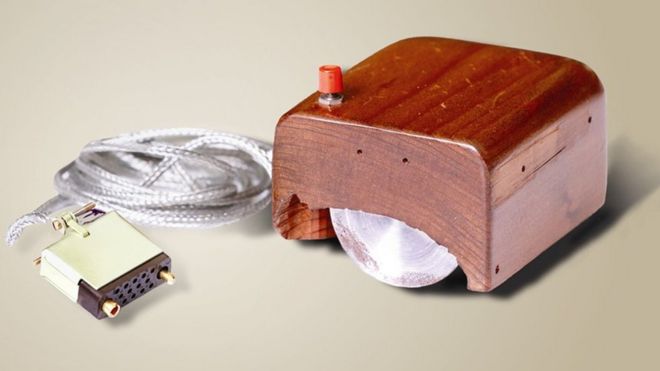
The co-creator of the computer mouse, William English, has died aged 91.
The engineer and inventor was born in 1929 in Kentucky and studied electrical engineering at university before joining the US Navy.
He built the first mouse in 1963, using an idea put forward by his colleague Doug Engelbart while the pair were working on early computing.
It would only become commonplace two decades later, when personal home computers became popular.
Mr English’s death was confirmed to US media outlets by his wife.
A brown box
Bill English became the first person to use a mouse when he built the prototype at Mr Engelbart’s research project at the Stanford Research Institute.
The idea was Mr Engelbart’s, which he described as only being “brief notes” – but the creation was down to Bill English.
His first version was a wooden block with a single button – and underneath, two rolling wheels at 90-degree angles that would record vertical and sideways movement.
“We were working on text editing – the goal was a device that would be able to select characters and words,” Mr English told the Computer History Museum in 1999.
In an experiment, the pair asked users to try out the mouse alongside other pointing devices such as a light pen or joystick – and found that the mouse was the clear favourite. They wrote a paper, which was largely ignored for years.
At their 1968 demonstration, the mouse was shown off publicly for the first time – along with video conferencing, word processing, and a form of links similar to what we use on the internet today.
“As it moves up or down or sideways, so does the tracking spot,” Doug Engelbart explained to the audience, as Bill English directed the technical side of the conference – including the video that wowed spectators.
The landmark nature of the showcase led to it being called “the mother of all demos” by later writers.
Asked decades later if it was the seminal moment in modern computing, Mr English replied: “I wouldn’t dispute that.” Read more from BBC.



